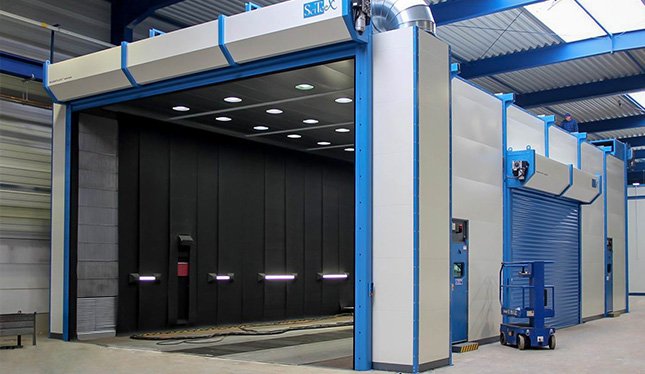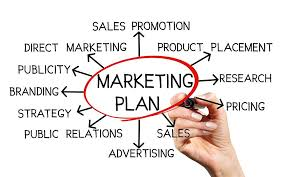Industrial blast booths are essential for various industries, offering a controlled environment for abrasive blasting. Ensuring safety within these booths is paramount to protect workers and maintain efficient operations. This blog post delves into the critical safety standards for industrial blast booths, highlighting lesser-known aspects to ensure comprehensive safety measures.
Comprehensive Safety Training for Operators
Safety starts with proper training. Every operator must undergo extensive training on the safe use and maintenance of blast booths. This training should cover the handling of abrasive materials, proper usage of personal protective equipment (PPE), and emergency procedures. Well-informed operators are crucial for maintaining a safe working environment, reducing the risk of accidents and ensuring compliance with safety standards.
Implementing Effective Ventilation Systems
Proper ventilation is crucial in blast booths to remove hazardous dust and fumes generated during the blasting process. A high-efficiency ventilated paint spray booth system can significantly improve air quality by continuously extracting contaminants from the booth. This prevents the buildup of harmful substances, protecting workers from respiratory issues and maintaining a safe workspace.
Using High-Quality Personal Protective Equipment (PPE)
Operators must wear appropriate PPE to protect themselves from the dangers associated with abrasive blasting. This includes respiratory protection, protective suits, gloves, and eye protection. Ensuring that PPE is well-maintained and fits correctly is essential for maximum protection. Regularly updating and inspecting PPE can prevent potential health risks and accidents.
Ensuring Regular Equipment Maintenance
Regular maintenance of blast booths and related equipment is vital for safety. This includes checking the integrity of the blast chamber, inspecting hoses and nozzles for wear and tear, and ensuring the proper functioning of ventilation and filtration systems. Scheduled maintenance helps identify and rectify issues before they become serious hazards, promoting a safer working environment.
Monitoring Air Quality
Air quality monitoring within blast booths is essential to detect the presence of harmful dust and fumes. Implementing advanced air quality monitoring systems can provide real-time data on contaminant levels, allowing for immediate corrective actions if necessary. Maintaining optimal air quality protects workers’ health and ensures compliance with occupational safety regulations.
Installing Emergency Stop Systems
Emergency stop systems are a critical safety feature in any blast booth. These systems allow operators to immediately halt operations in the event of an emergency, such as equipment failure or a medical incident. Easy access to emergency stop buttons and clear signage can prevent accidents and reduce the severity of incidents.
Establishing Safe Work Practices
Developing and enforcing safe work practices is essential for maintaining a secure environment in blast booths. This includes procedures for loading and unloading materials, handling waste, and performing routine cleaning. Clear guidelines and regular safety audits can help ensure that all personnel adhere to these practices, minimizing risks.
Enhancing Lighting Conditions
Adequate lighting is crucial in blast booths to ensure precision and safety. Poor lighting can lead to mistakes and accidents. Upgrading to high-tech spray paint booth lighting solutions, such as LED lights, can improve visibility and reduce energy consumption. Well-lit workspaces enhance safety and productivity.
Ensuring Proper Waste Disposal
Proper disposal of waste materials generated in blast booths is crucial for safety and environmental protection. Establishing protocols for the collection, storage, and disposal of abrasive materials and other waste prevents contamination and reduces the risk of accidents. Partnering with licensed waste disposal services ensures compliance with environmental regulations.
Promoting Ergonomic Practices
Ergonomics plays a significant role in preventing workplace injuries in blast booths. Designing workstations and processes that reduce strain on workers’ bodies can prevent musculoskeletal disorders. This includes adjustable equipment, anti-fatigue mats, and encouraging regular breaks to reduce physical stress.
Incorporating Automation and Robotics
The use of automation and robotics in blast booths can enhance safety by reducing the need for manual handling of hazardous materials. Automated systems can perform repetitive tasks with precision, minimizing human exposure to dangerous conditions. Investing in such technologies can lead to safer and more efficient operations.
Addressing Fire Hazards
Fire safety is a critical concern in blast booths, where flammable materials may be present. Installing fire suppression systems, such as sprinklers and fire extinguishers, is essential. Regular fire safety drills and inspections ensure that all personnel are prepared to respond effectively in the event of a fire.
Conducting Regular Safety Audits
Regular safety audits are vital for identifying potential hazards and ensuring compliance with safety standards. These audits should include thorough inspections of equipment, review of safety protocols, and assessment of employee training programs. Continuous improvement through regular audits helps maintain a safe working environment.
Encouraging a Safety-First Culture
Fostering a culture that prioritizes safety above all else is fundamental in industrial settings. Encouraging open communication about safety concerns, rewarding safe practices, and involving employees in safety planning can create a proactive safety culture. When safety becomes a shared responsibility, the entire organization benefits.
Ensuring the safety of industrial blast booths requires a comprehensive approach that includes proper training, regular maintenance, advanced safety systems, and a culture that prioritizes safety. By adhering to these standards, businesses can protect their workers, maintain efficient operations, and comply with regulatory requirements.



